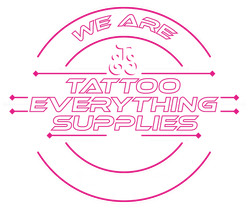When it comes to tattooing, every artist knows the right tools make all the difference. While machines, needles, and ink take centre stage, the choice of glide is often overlooked. Traditionally, petroleum jelly has been the go-to, but in recent years, specialized tattoo glides have risen in popularity. So, which is better for you and your clients?
The Case for Petroleum Jelly
Petroleum jelly has been a studio staple for decades. It’s inexpensive, widely available, and works as a basic barrier between the skin and the artist’s gloves. It helps reduce friction, making the tattooing process smoother.
However, petroleum jelly isn’t designed with tattooing in mind. It can clog needles, making lines less crisp, and it doesn’t offer much in the way of skin-soothing benefits.
The Case for Tattoo Glide
Tattoo glides are created specifically for the tattoo process. Unlike petroleum jelly, they’re lighter, less greasy, and often infused with ingredients that help reduce redness, swelling, and irritation. Many modern glides also come in scented options, which not only enhance the client’s experience but also give artists the ability to personalize their workflow.
Why Many Artists Are Making the Switch
Tattoo glide doesn’t just make tattooing smoother — it also supports healing from the very start. The right glide can keep skin calmer during the session, which can mean less trauma and a better overall result once healed. For artists who care about precision and client comfort, glide is the clear winner.
Takeaway: Petroleum jelly may still work in a pinch, but tattoo glide is the professional’s choice. It’s designed for the craft, for the skin, and for a smoother experience — for both artist and client.
If you're looking for the perfect blend of Petroleum jelly plus a glide, then Kanzo have both Glide and Fusion variants which you can find here.

